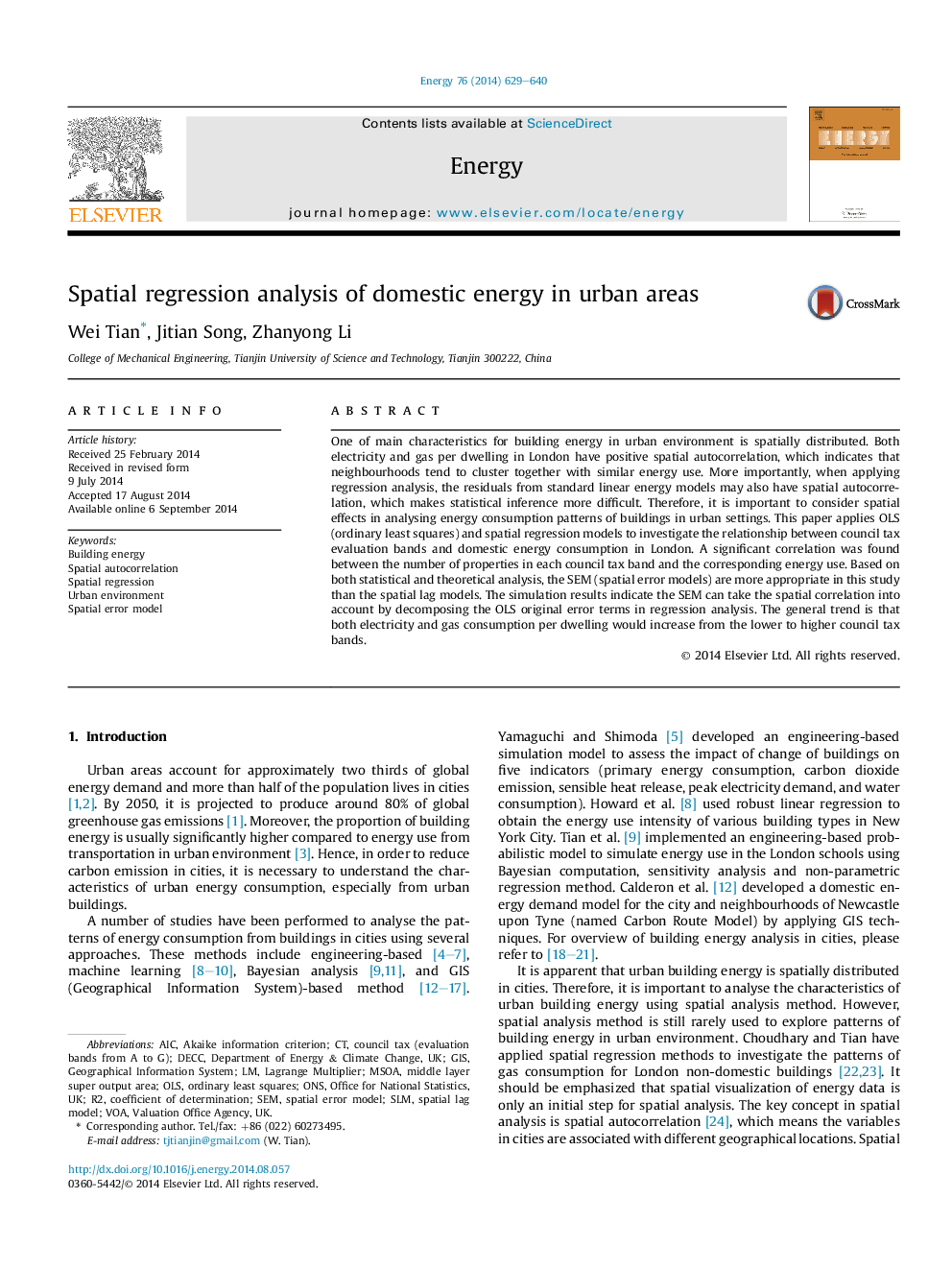| Article ID | Journal | Published Year | Pages | File Type |
|---|---|---|---|---|
| 8076907 | Energy | 2014 | 12 Pages |
Abstract
One of main characteristics for building energy in urban environment is spatially distributed. Both electricity and gas per dwelling in London have positive spatial autocorrelation, which indicates that neighbourhoods tend to cluster together with similar energy use. More importantly, when applying regression analysis, the residuals from standard linear energy models may also have spatial autocorrelation, which makes statistical inference more difficult. Therefore, it is important to consider spatial effects in analysing energy consumption patterns of buildings in urban settings. This paper applies OLS (ordinary least squares) and spatial regression models to investigate the relationship between council tax evaluation bands and domestic energy consumption in London. A significant correlation was found between the number of properties in each council tax band and the corresponding energy use. Based on both statistical and theoretical analysis, the SEM (spatial error models) are more appropriate in this study than the spatial lag models. The simulation results indicate the SEM can take the spatial correlation into account by decomposing the OLS original error terms in regression analysis. The general trend is that both electricity and gas consumption per dwelling would increase from the lower to higher council tax bands.
Keywords
Related Topics
Physical Sciences and Engineering
Energy
Energy (General)
Authors
Wei Tian, Jitian Song, Zhanyong Li,
